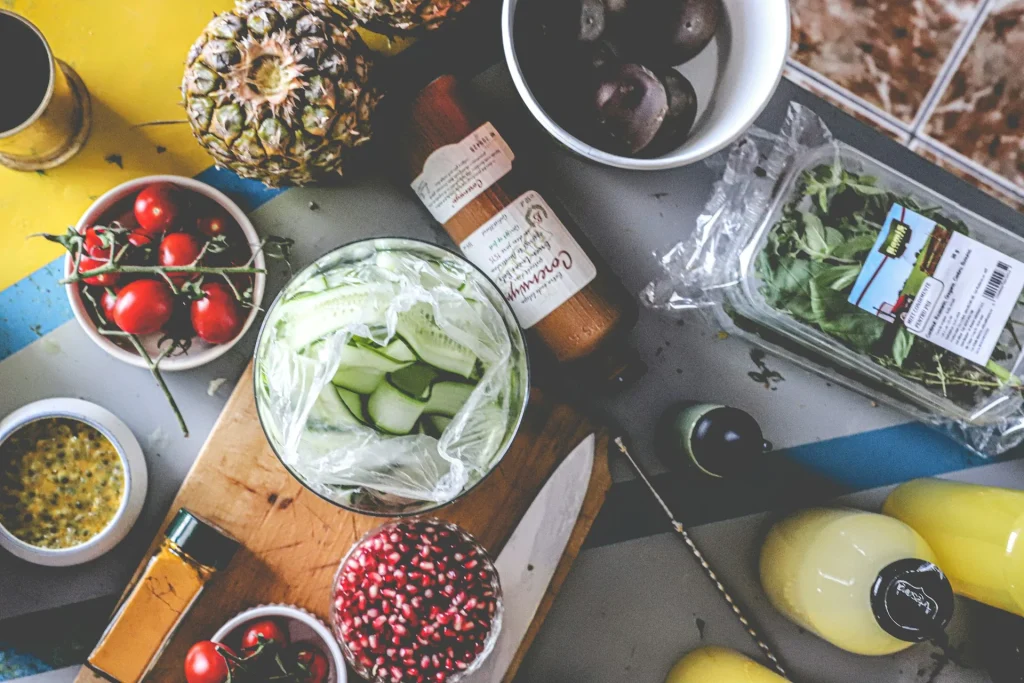Healthy eating does not need to be costly and complicated. Taking some planning and creativity, you can cook nutritious and tasty foods without spending a bomb. Being a student, being a busy professional or cook in a family, learning how to make inexpensive healthy food is an experience that not only makes your body better but also your wallet.
In this guide, we will discuss real-life suggestions, plans, and foods that are nutritious, delicious, and do not cost a lot. You will find that it is simple to eat healthy and cost-effective meals at the end of it.
1. Plan Your Meals Ahead
Budget-friendly healthy eating is based on meal planning. By planning in advance, you will end up waste free, avoiding last minute take out and more effective grocery shopping.
Meal planning tips:
- Establish a breakfast, lunch and dinner weekly menu.
- Use the same ingredients in several dishes (e.g., in salads and wraps, roasted vegetables).
- Use the cheap and fresher seasonal produce.
- Always have a grocery list and make sure that you adhere to it to prevent buying out of impulse.
Even a simple plan can save both time and money while ensuring you eat balanced meals every day.
2. Buy Smart: Budget-Friendly Grocery Shopping
The place and the method of shopping are very important. One of the largest strategies of healthy meals on a budget is smart shopping.
Tips for smarter grocery shopping:
- Shop in large quantities of foodstuffs such as rice, pasta, beans and oats.
- Shop at local farmers markets to have cheap fresh produce.
- Compare prices and redeem store applications or coupons.
- Use store brands, in most cases, they can be of the same quality at a cheaper rate.
By making it conscious and planned, you will be able to stretch every dollar, as well as your pantry will always have nutritious staples.
3. Focus on Affordable Protein Sources
Protein is essential for health, but it can be one of the more expensive grocery items. Fortunately, there are plenty of budget-friendly options.
Affordable protein sources:
- Eggs: Versatile, filling, and inexpensive.
- Beans and lentils: High in protein and fiber.
- Canned tuna or salmon: Economical and nutrient-dense.
- Chicken thighs or drumsticks: Cheaper than breasts, equally nutritious.
- Tofu or tempeh: Plant-based options that are affordable and versatile.
Mixing these proteins with grains and vegetables creates balanced meals without overspending.
4. Embrace Whole Grains and Fiber
Whole grains are both filling and affordable. They provide sustained energy and essential nutrients, helping you stay satisfied longer.
Budget-friendly whole grains include:
- Brown rice or quinoa
- Oats (great for breakfast or baking)
- Whole wheat pasta or tortillas
- Barley, bulgur, or millet
Combining grains with beans, vegetables, and lean proteins helps you create complete meals that are healthy, delicious, and economical.
5. Cook at Home Whenever Possible
It is much cheaper and healthier to cook food at home than to go to restaurants. Even very basic methods of cooking, roasting, steaming or stir-frying can turn some basic ingredients into something amazing.
Home cooking tips for beginners:
- Batch cook and freeze meals for later.
- Use one-pot recipes to save time and reduce cleanup.
- Experiment with herbs and spices to enhance flavor without extra cost.
Not only do you save money, but you also control the ingredients, reducing unhealthy fats, sugar, and sodium.
6. Reduce Food Waste
Food waste is a hidden budget killer. Learning to use every ingredient saves money and minimizes stress.
Smart ways to reduce waste:
- Freeze leftover vegetables, fruits, or cooked grains.
- Use vegetable scraps to make broths.
- Plan portions to avoid overcooking.
- Repurpose leftovers into soups, salads, or wraps.
Being mindful about food usage makes healthy meals on a budget much more sustainable.
7. Keep Snacks Healthy and Affordable
Snacking doesn’t have to derail your budget or nutrition. Affordable, healthy snacks can keep you energized between meals.
Budget-friendly snack ideas:
- Fresh fruit or cut vegetables with hummus
- Popcorn (air-popped)
- Yogurt with oats or fruit
- Homemade trail mix with nuts and seeds
Preparing snacks in advance helps you avoid expensive convenience foods that are often high in sugar and low in nutrients.
8. Make Drinks Part of Your Strategy
Beverages can add unnecessary calories and cost. Water is always the best choice, but there are other budget-friendly, healthy alternatives.
Drink tips:
- Brew your own coffee or tea instead of buying daily café drinks.
- Infuse water with fruit for flavor.
- Avoid sugary sodas and processed drinks that add extra cost and calories.
Small changes in what you drink can have a big impact on both your health and your budget.
9. Use Herbs and Spices for Flavor
Spices and herbs are inexpensive and can transform simple meals into something flavorful.
Ideas for seasoning without overspending:
- Garlic, onion, and ginger add depth to dishes.
- Dried herbs like oregano, thyme, and basil are long-lasting and versatile.
- Experiment with paprika, cumin, or chili powder for bold flavors.
Herbs and spices make healthy ingredients exciting and satisfying, no expensive sauces needed.
10. Prepare a Weekly Rotation
A meal rotation program weekly helps to decrease decision fatigue and maintain low costs. You will be aware of what you will need every week, and this will avoid spending money on things that you are not primarily going to consume.
Example rotation:
- Breakfast: Oatmeal with fruit or eggs with vegetables
- Lunch: Grain bowls with beans, veggies, and protein
- Dinner: Stir-fry, baked chicken with roasted vegetables, or pasta with legumes
- Snacks: Fruits, nuts, yogurt, or popcorn
Once your rotation is established, it’s easier to mix in new recipes while staying budget-conscious.
Conclusion
Healthy eating at a low cost is absolutely feasible provided one plans, gets creative and mindful. It is possible to make healthy yet budget-friendly meals using whole food, affordable proteins, smart shopping, and reducing waste to make delicious but healthy meals on a budget.
Also, keep in mind that it is not about perfection but rather consistency. Even minor modifications in your planning, shopping and cooking can have a long time payback to your health and your pocket. You will be able to have delicious, balanced meals and not spend too much money with these strategies- each and every week.


